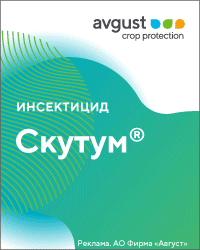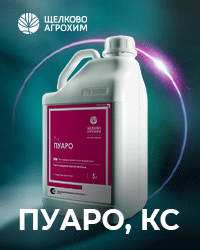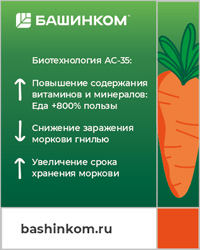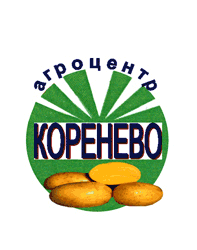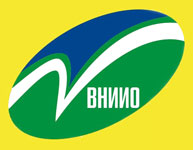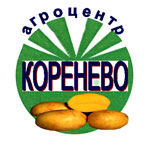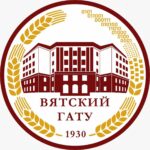UDC 635.64:581.19
https://doi.org/10.25630/PAV.2024.27.52.004
Topinsky A.I., Gavrish S.F., Redichkina T.A., Artemyeva G.M., Samoilenko P.A.
Currently, consumers have started to prefer higher-quality products that possess an attractive appearance and high taste qualities. For this reason, the aim of this study was to conduct a biochemical assessment of new promising F1 hybrids of cherry-like tomatoes with various fruit colors, obtained as a result of breeding work at the LLC «Research Institute of Vegetable Crop Breeding.» The research was conducted in 2022-2023 under protected cultivation conditions at the Alexinsky Breeding Center «Gavrish» in the climatic conditions of the Tula region (third light zone). During the study, significant differences were found between color groups in terms of a complex of biochemical fruit parameters. For example, in the fruits of yellow-fruited (orange-fruited) hybrids, the average content of dry matter (mean = 10.3%) and monosaccharides (mean = 6.2%) significantly exceeded the average values in other groups, while simultaneously being lower in ascorbic acid content (mean = 25.2 mg/100 g) and lycopene. In contrast, brown-fruited hybrids had the highest average concentration of ascorbic acid in their fruits (mean = 34.1 mg/100g), as well as accumulating significantly more lycopene (mean = 7.3 mg/g) and lutein (mean = 1.3 mg/g), while being lower than other groups in monosaccharide content (mean = 4.6%). Orange-fruited hybrids were distinguished by their content of prolycopene (mean = 3.5 mg/g), while prolycopene was not detected in the fruits of other color groups. Based on the results of a two-year varietal trial and a comparative analysis of economically significant biochemical traits, a number of hybrids with different fruit colors may be submitted for state varietal testing, which could subsequently recommend them for production under protected cultivation conditions. Thus, for further research, we recommend the following hybrids: red-fruited – k-1156/17 (F1 Berlino) and k-2717/20 (F1 Cheruti); pink-fruited – k-2749/20 (F1 Monami) and k-1362/22; brown-fruited – 2754/20 (F1 Roxy) and k-1405/22; orange-fruited – k-2742/20 (F1 Pikachu).
Key words: cherry tomato, color, biochemical analysis, dry matter, sugars, acidity, pigments, sugar-acid coefficient.
Topinskii A.I. (author for correspondence), research fellow, Research Institute of Vegetable Crops Breeding Ltd., applicant of FSBSI Federal Scientific Vegetable Center. E-mail: without.fantazy1@gmail.com
Gavrish S.F., D.Sci (Agr.), professor, Chairman of the Board of Directors of Gavrish group of company.
Redichkina T.A., Cand. Sci. (Arg.), director of Research Institute of Vegetable Crops Breeding Ltd.
Artemyeva G.M., Cand. Sci. (Bio.), research fellow at the laboratory of Solanaceous crops of Research Institute of Vegetable Crops Breeding Ltd.
Samoilenko P.A., research fellow of Research and production association «Gavrish», applicant of Kuban State Agrarian University
- Baldwin, E.A., Goodner, K., Plotto, A. (2008). Interaction of volatiles, sugars, and acids on perception of tomato aroma and flavor descriptors. J. Food Sci. 73, 294–307. doi: 10.1111/j.1750-3841.2008.00825.x
- Isolation and characterization of fruit vacuolar invertase genes from two tomato species and temporal differences in mRNA levels during fruit ripening. K.J. Elliott, W.O. Butler, C.D. Dickinson, Y. Konno, T.S. Vedvick, L. Fitzmaurice, T.E. Mirkov // Plant Mol Biol. 1993. Vol. 21. No3. Pp. 515–524.
- Fridman, E., Zamir D. Functional divergence of a syntenic invertase gene family in tomato, potato, and Arabidopsis. Plant Physiol. 2003. Vol.131. Pp. 603–609.
- Differential expression of acid invertase genes during seed germination in Arabidopsis thaliana. W. Mitsuhashi, S. Sasaki, A. Kanazawa, Y.Y. Yang, Y. Kamiya, T. Toyomasu. Biosci. Biotechnol. Biochem. 2004. Vol. 68. Pp. 602–608.
- Wang F., Smith A.C., Brenner M. lsolation and Sequencing of Tomato Fruit Sucrose Synthase cDNA. Plant Physiol. 1993. Vol.103. Pp. 1463–1464.
- DNA-binding specificity, transcriptional activation potential, and the rin mutation effect for the tomato fruit-ripening regulator RIN. Y. Ito, M. Kitagawa, N. Ihashi, K. Yabe, J. Kimbara, J. Yasuda, H. Ito, T. Inakuma, S. Hiroi, T. Kasumi. Plant J. 2008. Vol. 55. No2. Pp. 212–223.
- Tomato Vacuolar Invertase Inhibitor Mediates Sucrose Metabolism and Influences Fruit Ripening. G. Qin, Z. Zhu, W. Wang, J. Cai, Y. Chen, L. Li, S. Tian. Plant Physiol. 2016. Vol.172. No3. Pp. 1596–1611.
- A mutation in the tomato DDB1 gene affects cell and chloroplast compartment size and CDT1 transcript. N. Caspi, I. Levin, D.A. Chamovitz, M. Reuveni. Plant Signal Behavior. 2008. No3(9). Pp. 641–649.
- Anthon G.E., LeStrange M., Barrett D.M. Changes in pH, acids, sugars and other quality parameters during extended vineholding of ripe processing tomatoes. J. Sci. Food Agric. 91 (2011) Pp. 1175 –118.
- Identification of candidate genes for phenolics accumulation in tomato fruit. A. Di Matteo, V. Ruggieri, A. Sacco, M. Rigano, F. Carriero, A. Bolger et al. Plant Sci. 2013. Vol. 20. Pp. 87–96. doi: 10.1016/j.plantsci.2013.02.001
- Jones R.A., Scott S.J. Improvement of tomato flavor by genetically increasing sugar and acid contents. Euphytica 32. 1983. Pp. 845–855. https://doi.org/10.1007/BF0004216612.
- Chemistry, distribution, and metabolism of tomato carotenoids and their impact on human health. F. Khachik, L. Carvalho, P.S. Bernstein, G.J. Muir, Zhao DY, Katz NB Exp. Biol. Med. 2002. 227(10). Pp. 845–851.
For citing: Biochemical assessment of F1 cherry tomato hybrids with different fruit colours. A.I. Topinsky, S.F. Gavrish, T.A. Redichkina, G.M. Artemyeva, P.A. Samoilenko. Potato and vegetables. 2024. No8. Pp. 29-33. https://doi.org/10.25630/PAV.2024.27.52.004 (In Russ.).

